From 4 to 6 April, the 43rd edition of Comic Barcelona—one of Europe’s leading comic events— took place in Barcelona, Spain. This year’s event featured many voices, including that of Aurora Dols, a researcher at the Institute for Bioengineering of Catalonia (IBEC) and member of the SPM4.0 project, who led several initiatives aimed at connecting scientific research with society.
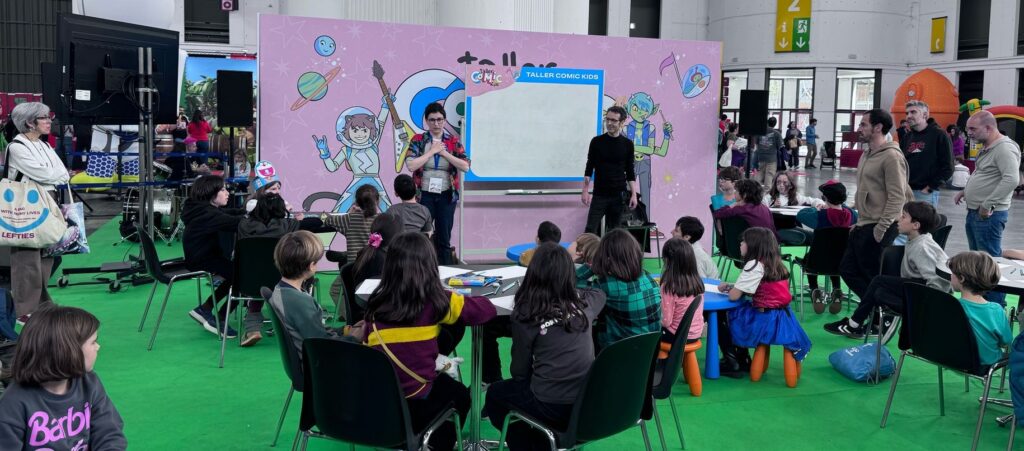
One more year Comic Barcelona was a great success and gathered more than 110,000 attendees for a celebration of creativity, illustration, and storytelling. In this vibrant cultural setting, SPM4.0 was represented through a series of engaging activities proposed by Aurora Dols, each designed to foster dialogue between science and society. Her proposals targeted diverse audiences and offered unique approaches to scientific outreach, using the language of comics as an accessible and compelling medium to demystify cutting-edge research.
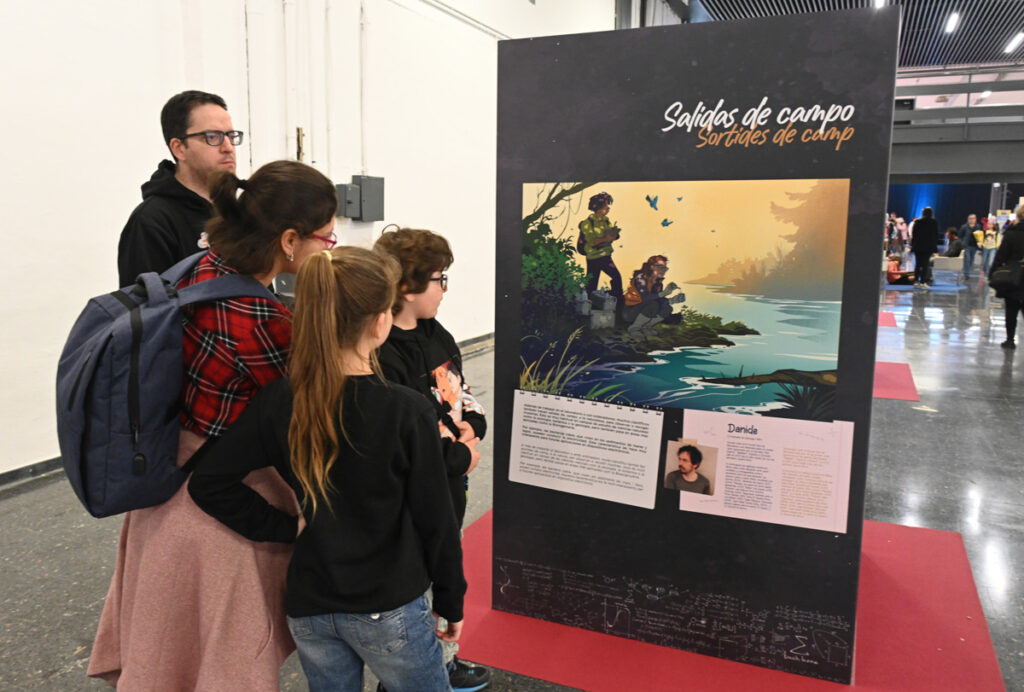
Day by day in science. What do scientists do?
What image comes to mind when you think of a scientist? Most likely, you picture an elderly man with white hair, wearing a lab coat and displaying absent-minded or eccentric behavior.
Unfortunately, this stereotype remains deeply ingrained in our collective imagination. But who are scientists really, and how do they actually work? Are them all men? Do they only conduct experiments? Are lab coats a permanent fixture of their attire? Do they always exclaim “Eureka!”?
This exhibition—an initiative led by researcher Aurora Dols as part of the SPM4.0 Project—sought to address these questions through 15 illustrations by various well-known graphic artists. At its core, the exhibition aimed to challenge and dismantle stereotypes about science, such as the notion that scientific results are immediate, that researchers are predominantly male, or that scientific work lacks diversity and collaboration.
The illustrations presented a representative portrayal of scientific work, challenging common labels and highlighting the wide range of tasks, methodologies, and professionals that shape the research landscape. Through those illustrations, it becomed clear that science goes far beyond laboratory experiments—it also involves computational work, field studies, meetings, conferences, and international collaboration. The exhibition further underscored the essential role of teamwork, the value of continuous learning, and the patience required to achieve robust and meaningful results.
Among the artists who have participated are Jaume Farrés, Toni Carbós, Miriam Rivera, Meritxell Bosch, Clara Soriano, Nadia Hafid, Fermín Solín, Danide, Ken Niimura, Guilemm Dols, Candela Sierra, Luna Pan, Raquel Gu, Genie Espinosa and Albert Monteys. The cover design was the work of calligrapher Iván Castro. Through their illustrations, visitors were invited to metaphorically step into a scientist’s lab coat and move beyond the clichéd image, gaining insight into the everyday lives and genuine diversity of those who pursue scientific careers.
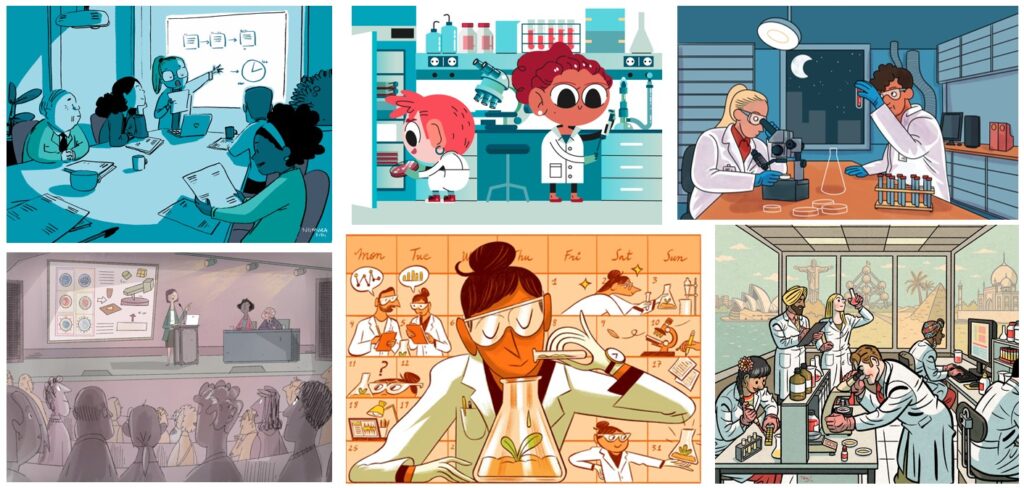
Round table: ‘Comics and science: awakening scientific vocations’
Another initiative coordinated by Aurora Dols was a round table discussion aimed primarily at a young audience, attracting nearly 200 attendees. The session focused on how visual language can help bring science closer to the public by transforming complex ideas into accessible and compelling narratives.
The panel featured Teresa Sanchis Estruch, IBEC’s Strategy Manager; Laia Manera Salom, Manager of IBEC’s Art and Science Programme; Miriam Rivera, science communicator, comic specialist, and one of the illustrators of the exhibition; and Oriol Estrada, a populariser of manga, anime, and Japanese culture, who acted as moderator.
Sanchis emphasized IBEC’s dedication to public engagement through educational and outreach initiatives such as this exhibition, the IBBI comic series, and the institute’s 10th anniversary commemorative book, while also paying tribute to Aurora Dols’ pioneering role. Manera contributed with a humanities perspective, noting that “increasingly, scientific institutions are opening up to diverse professional profiles that bring valuable new insights.” Finally, Rivera reflected on common stereotypes in the portrayal of science and urged the audience to help dismantle them by “explaining science in a different, engaging, and memorable way.”
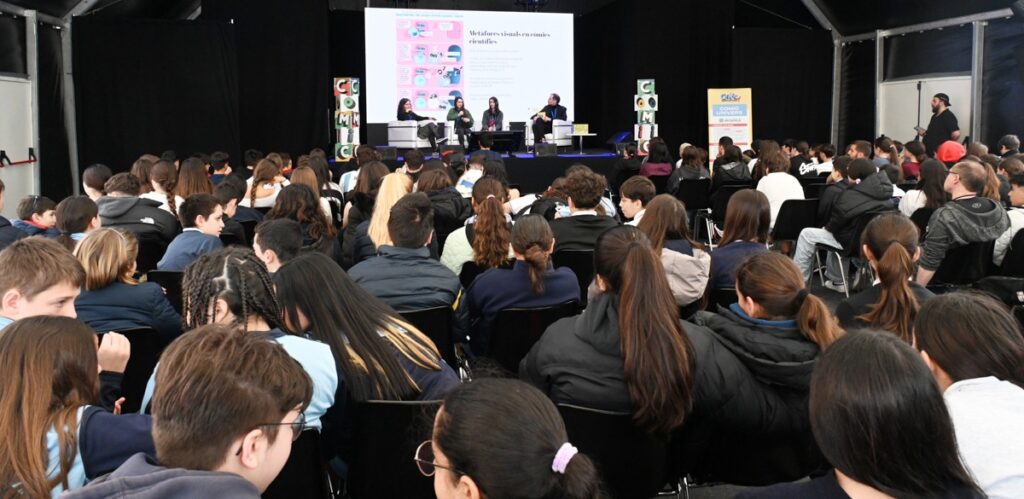
‘Draw yourself as a scientist! Create your comic’
Aurora’s final contribution to the programme was her involvement in the workshops “Draw Yourself as a Scientist! Create Your Comic”. Nearly 90 secondary and high school students participated in the activity, where they had the opportunity to represent themselves as scientists in comic format—imagining, experimenting, and discovering.
Led by Toni Carbós, one of the illustrators featured in the exhibition, the students explored how to create scientific characters and narratives, and how illustration can serve as a powerful tool for communicating research.
The workshop was also held during the weekend for visiting families, offering them a similar engaging experience.
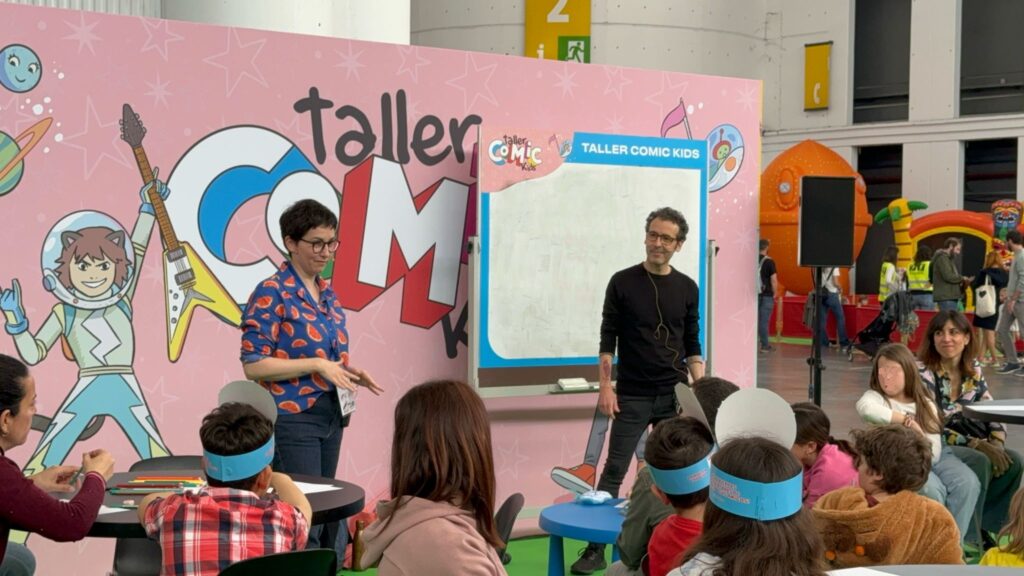
This initiative aligns with other efforts by figures from the comic book world such as Reed Richards, Anthony Ives, Gargunza, and Ray Palmer that demonstrate that science science is not only a driving force in the world of comics, but also a fundamental pillar of our society. Taking part in such activities, SPM4.0 project contributes to fostering scientific vocations and demystifying science for the general public, showing that science knows no borders or rigid disciplines; it is a collective, multidisciplinary endeavour that thrives on the richness of diverse perspectives and experiences to foster progress of society as a whole.
